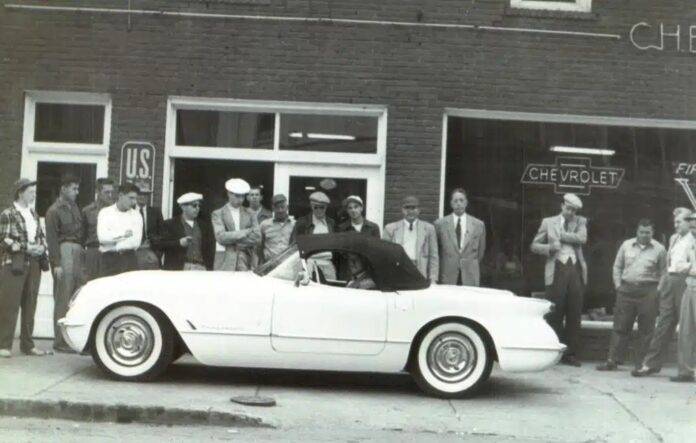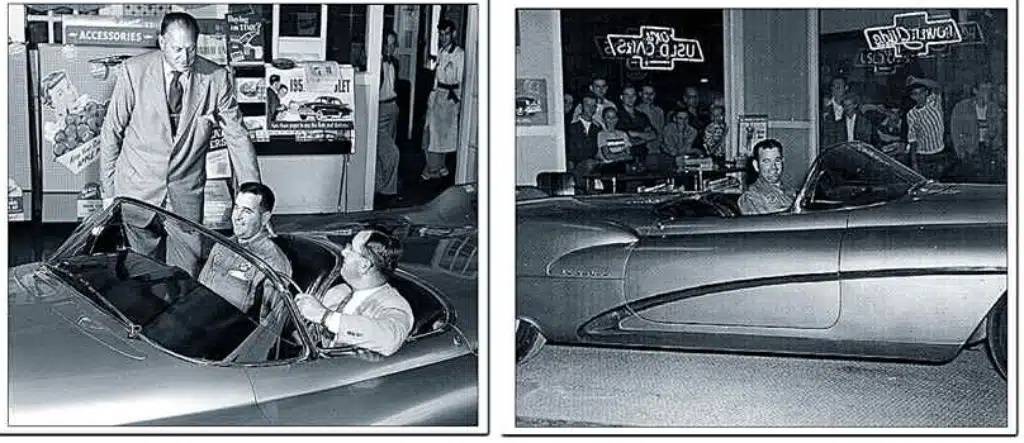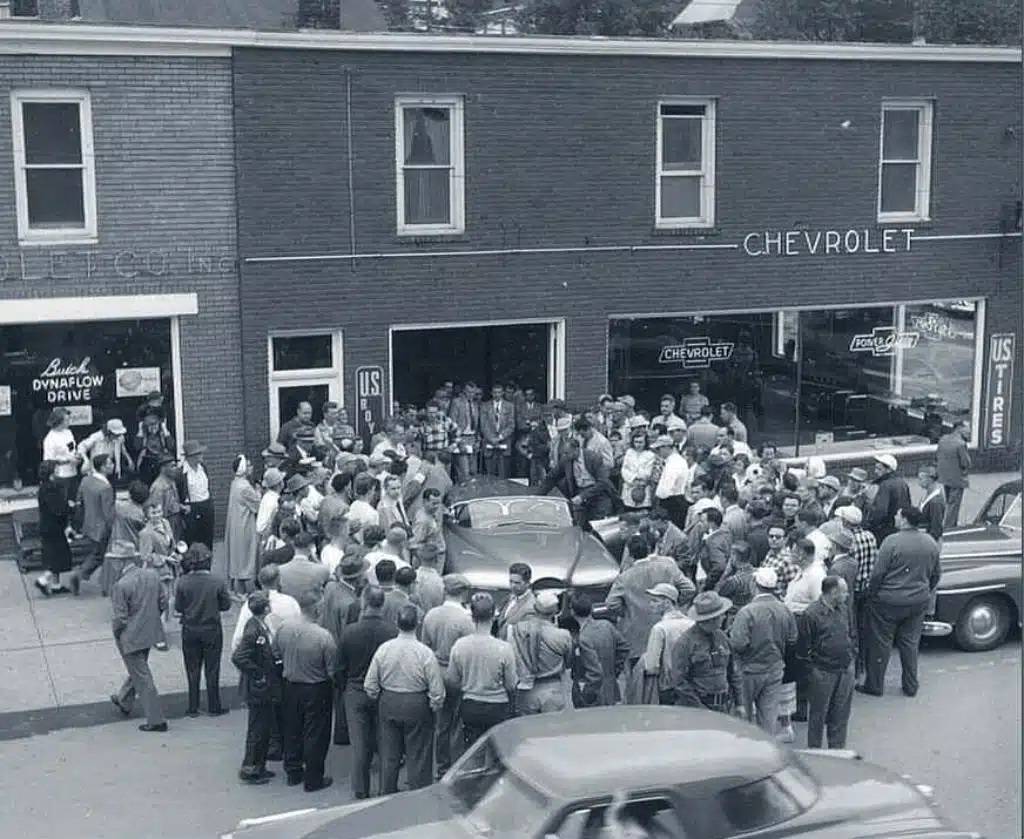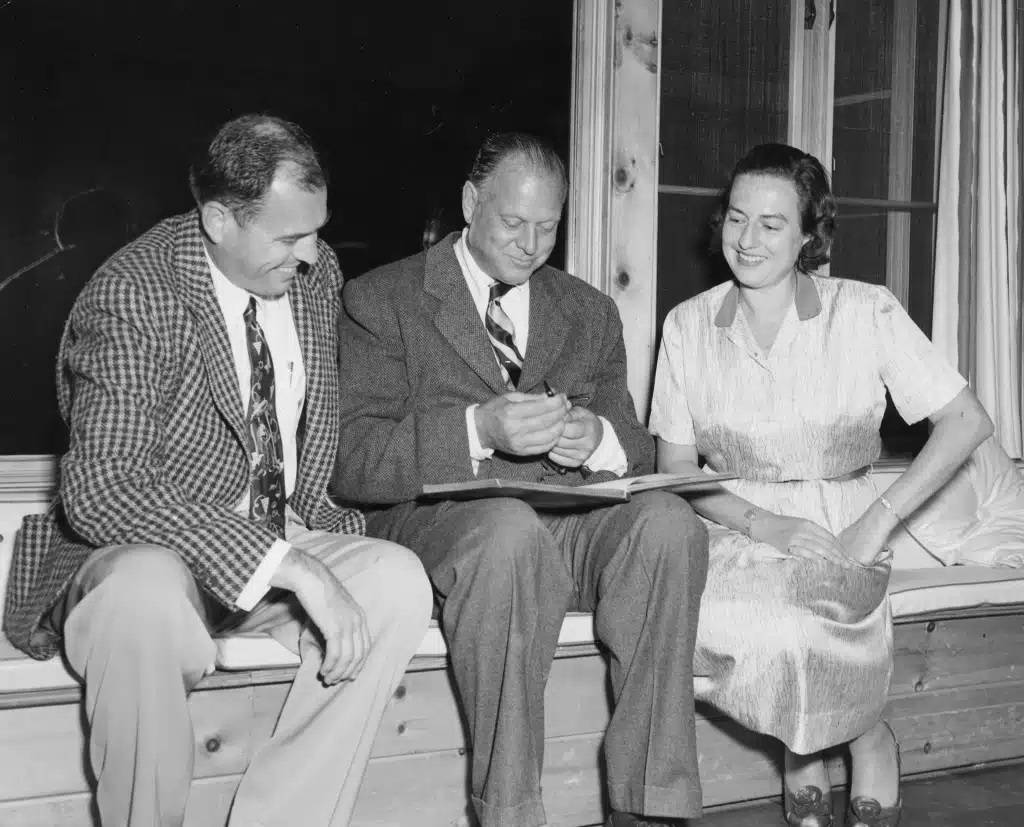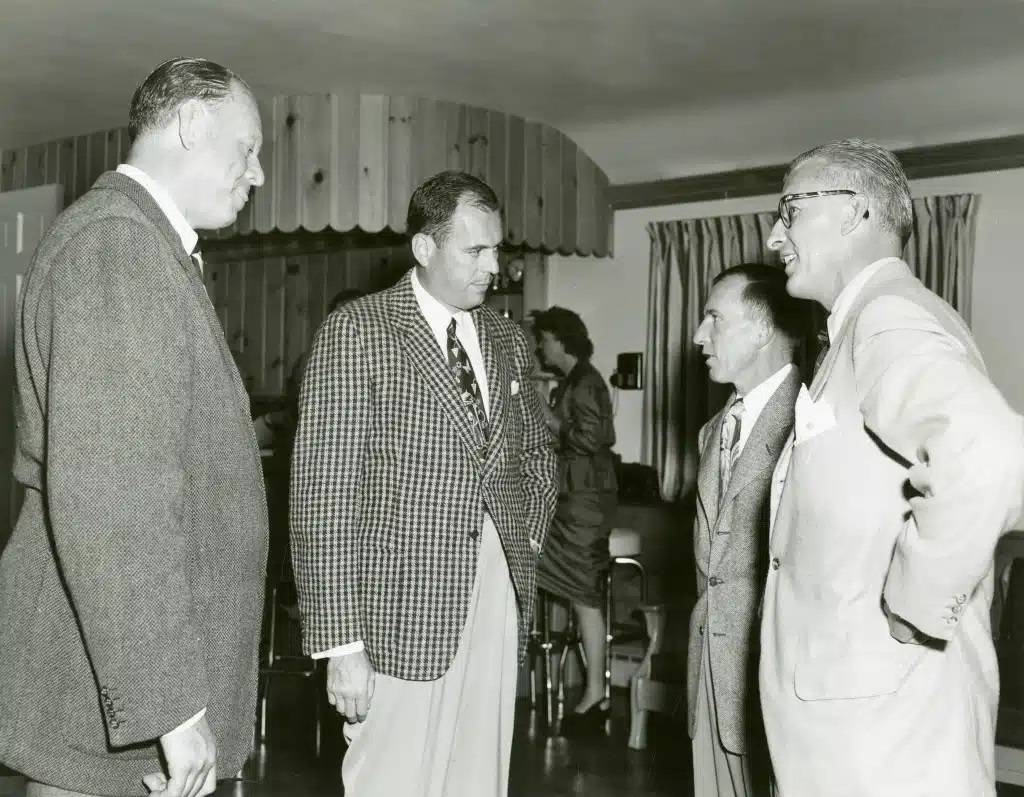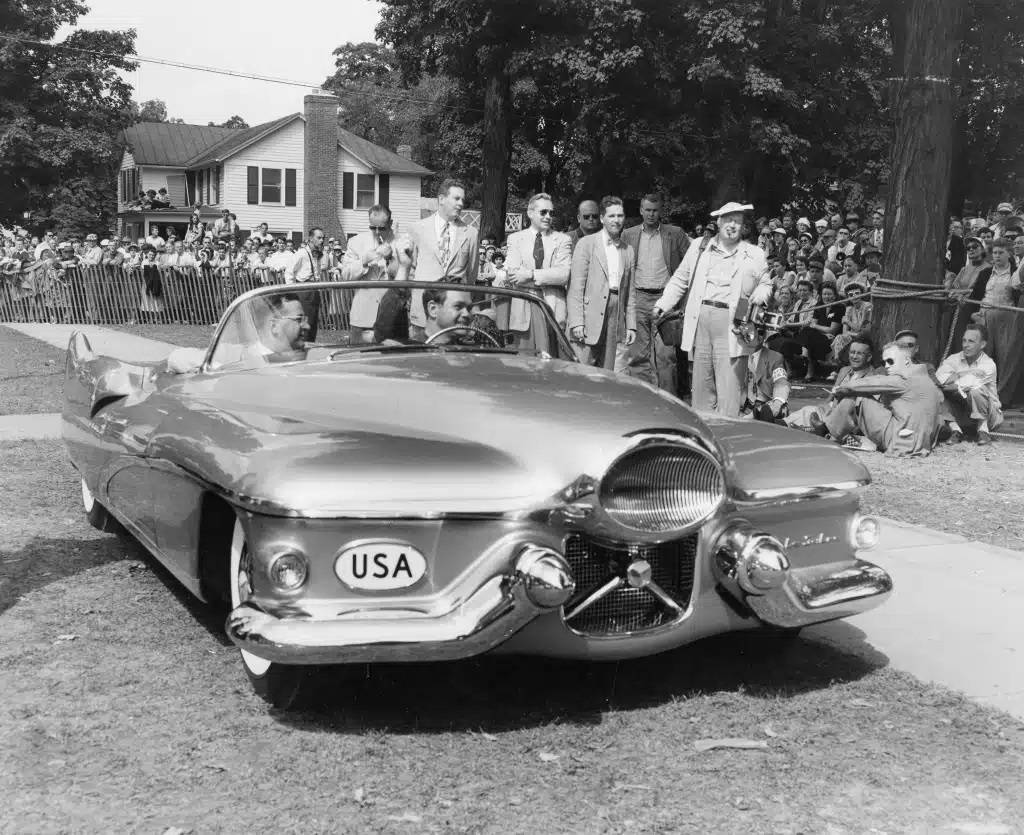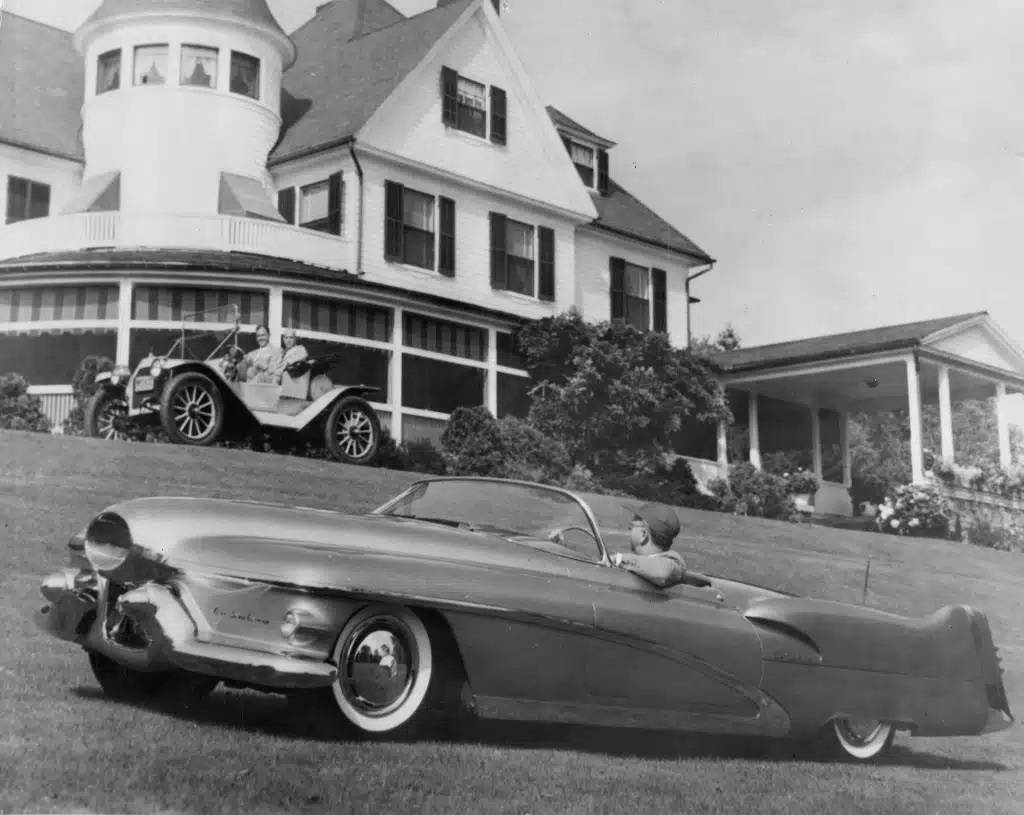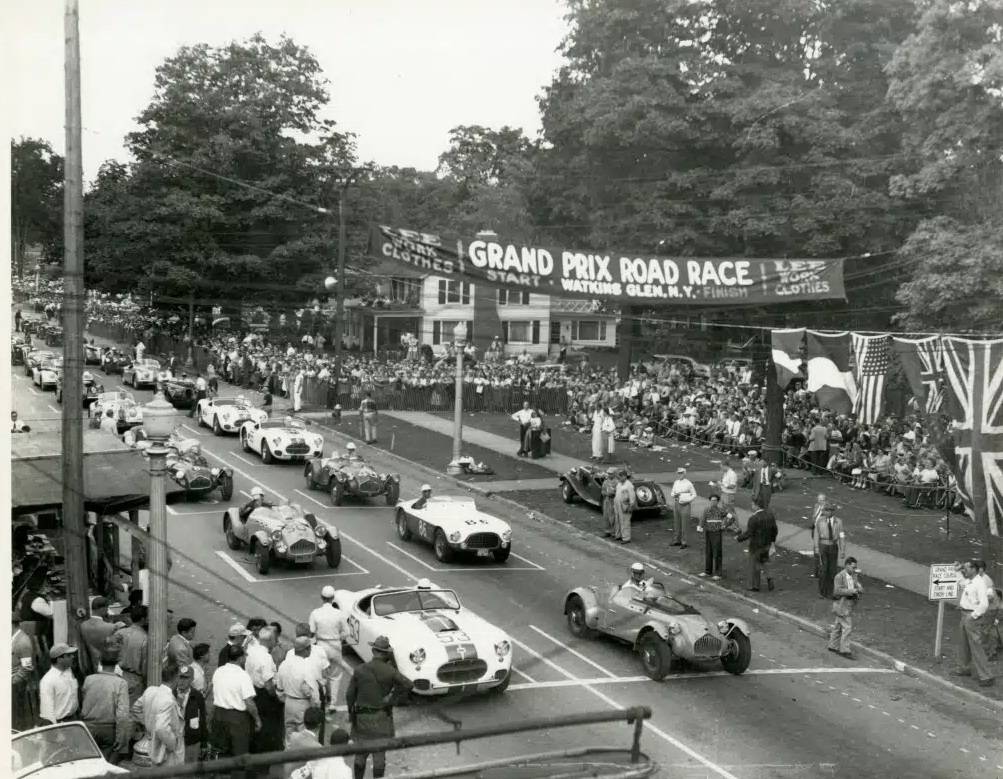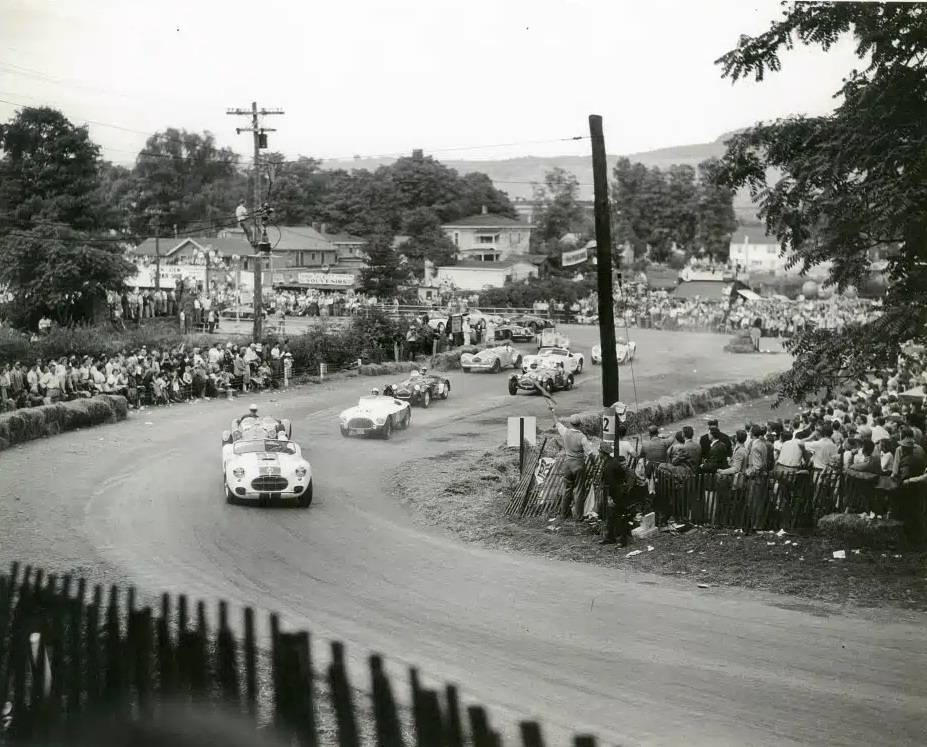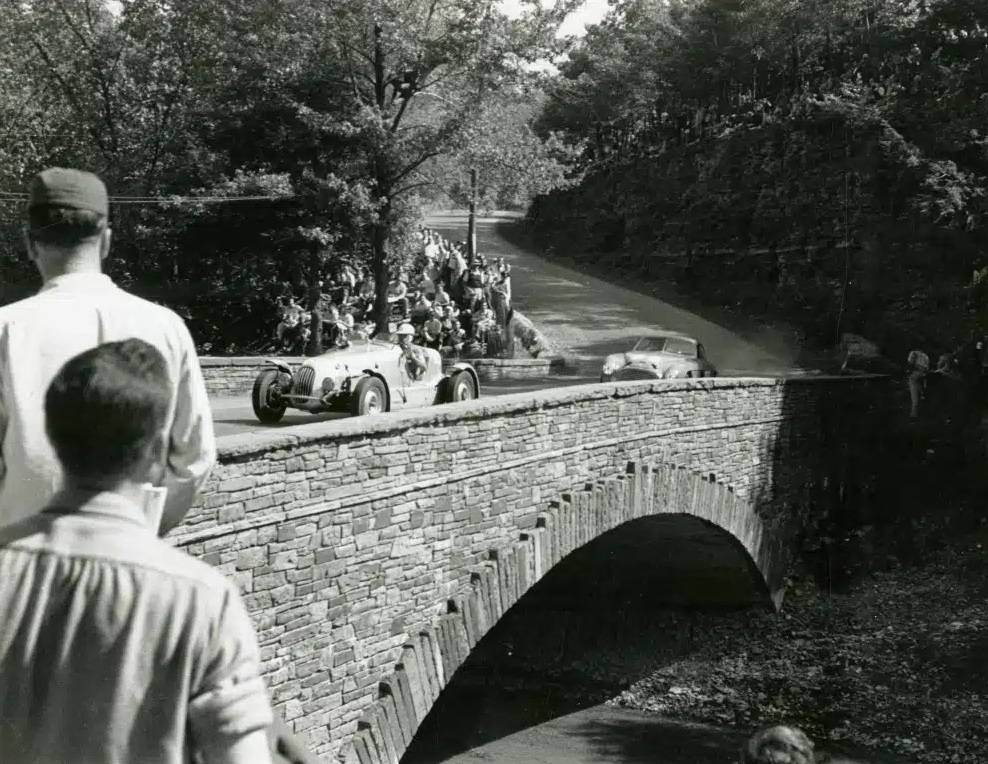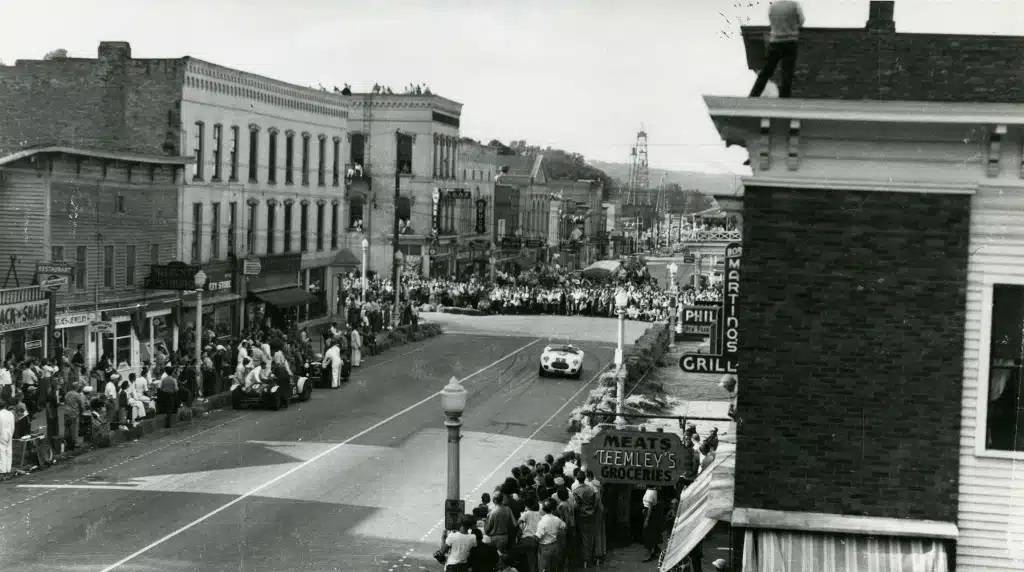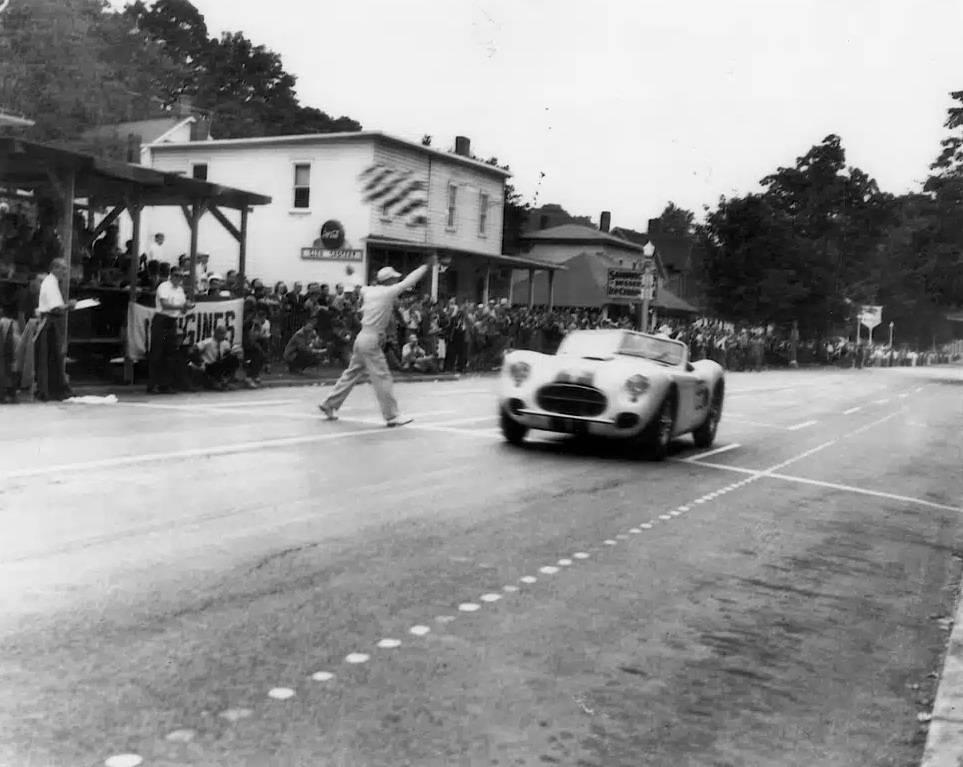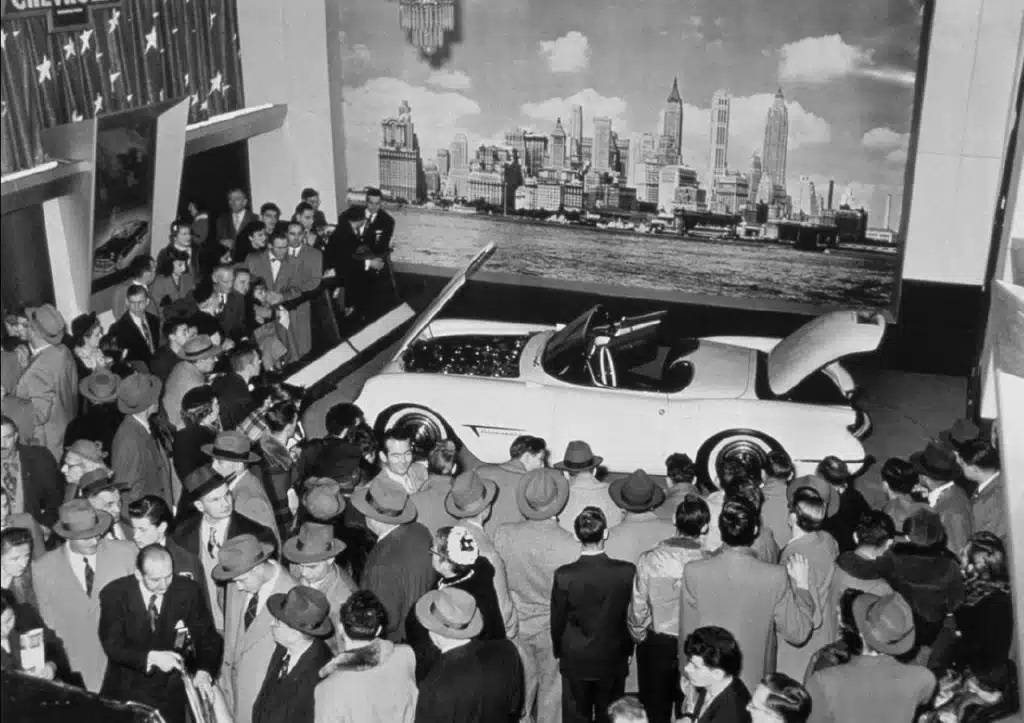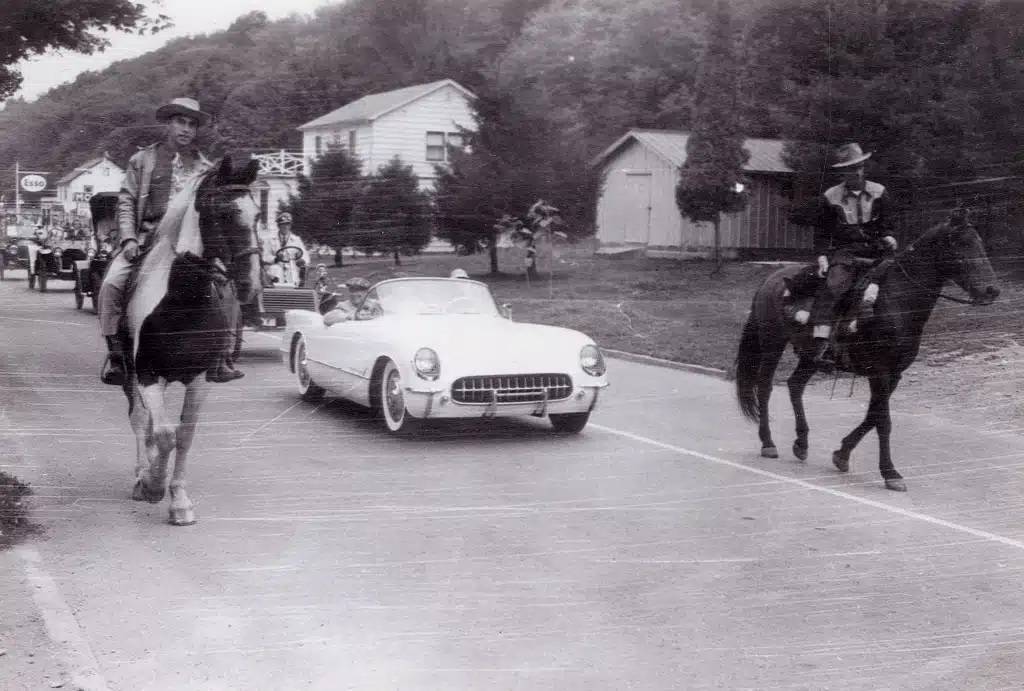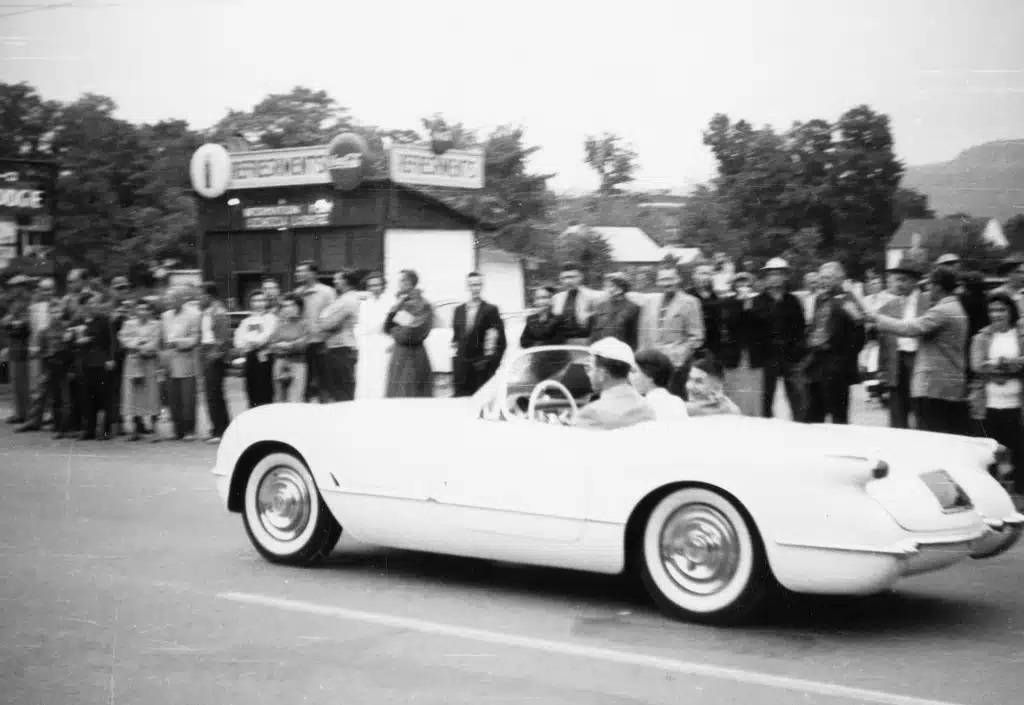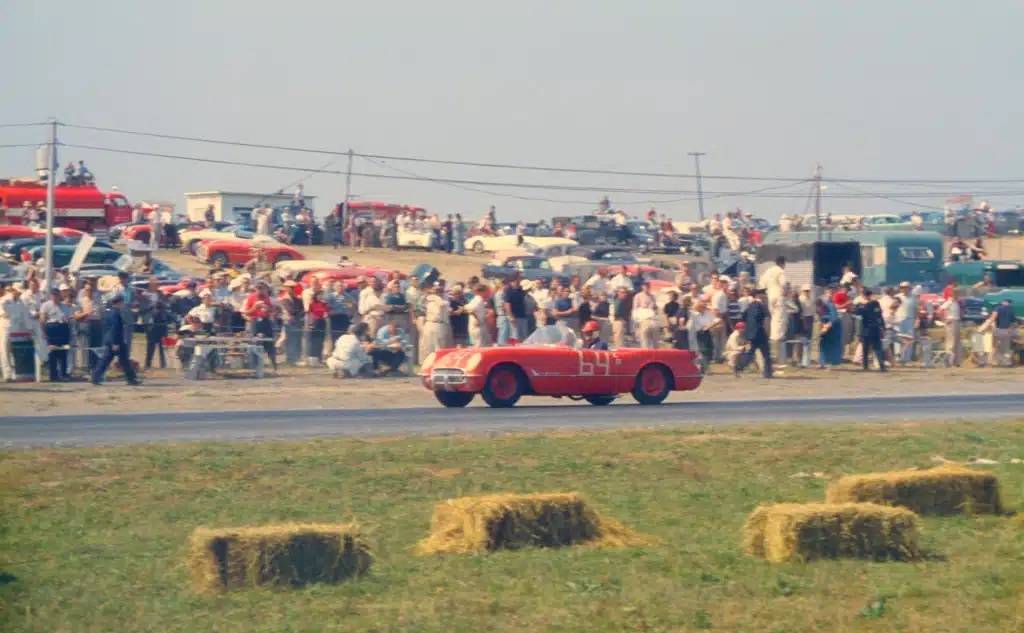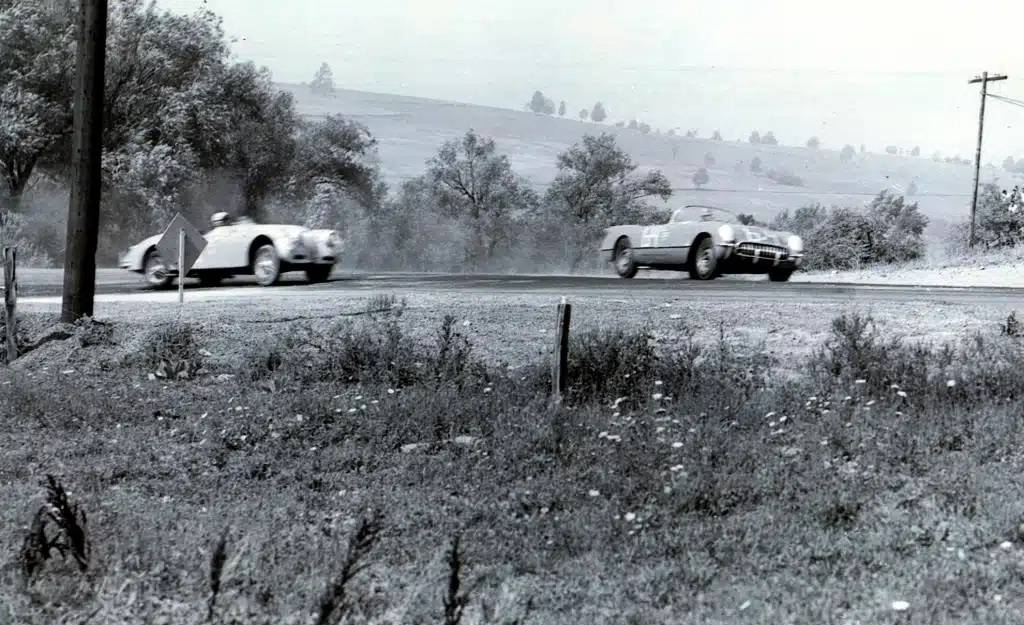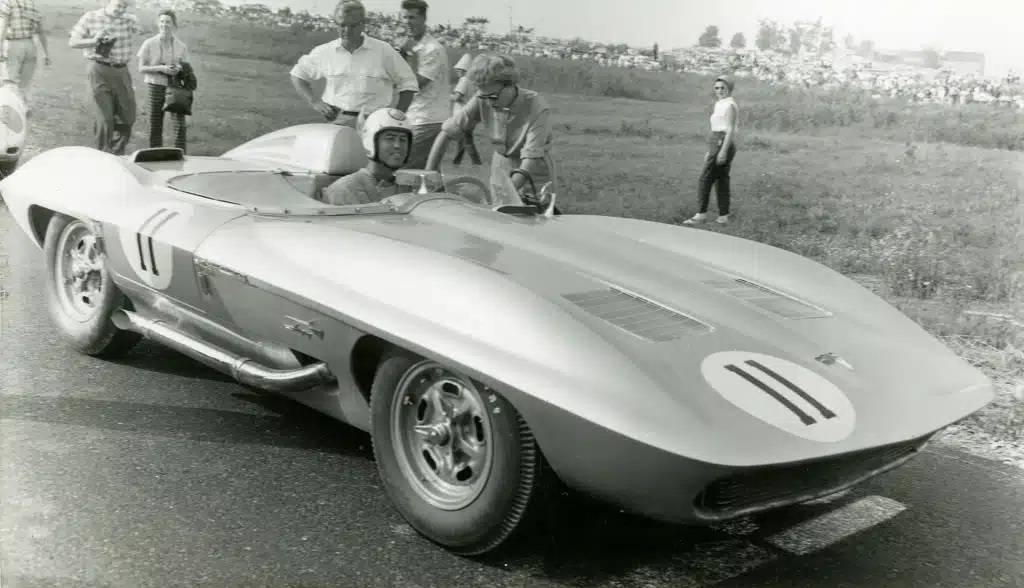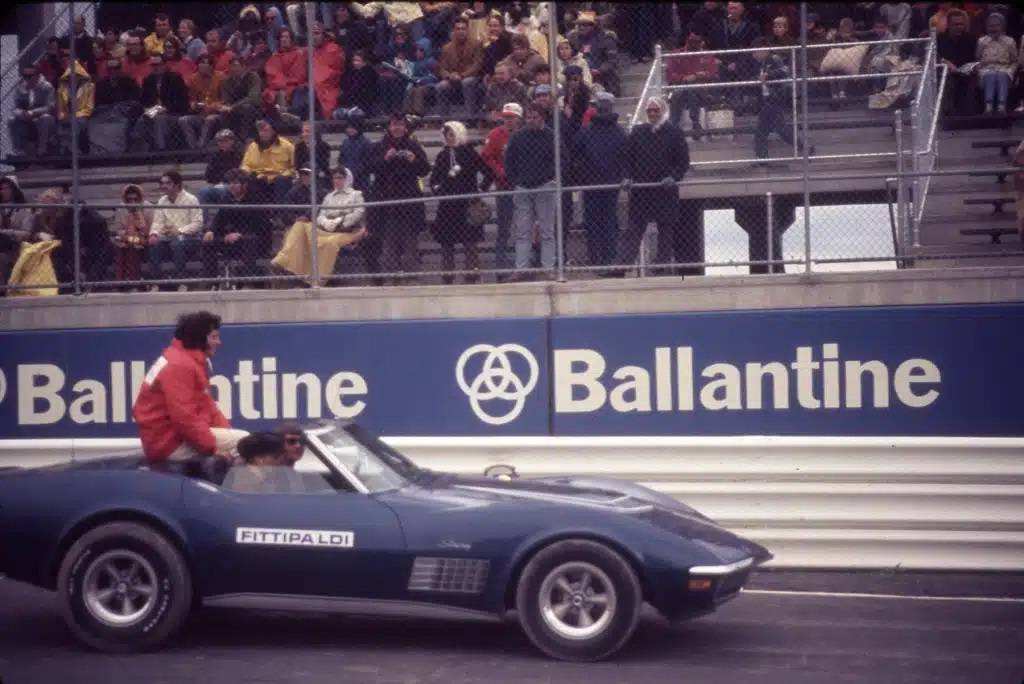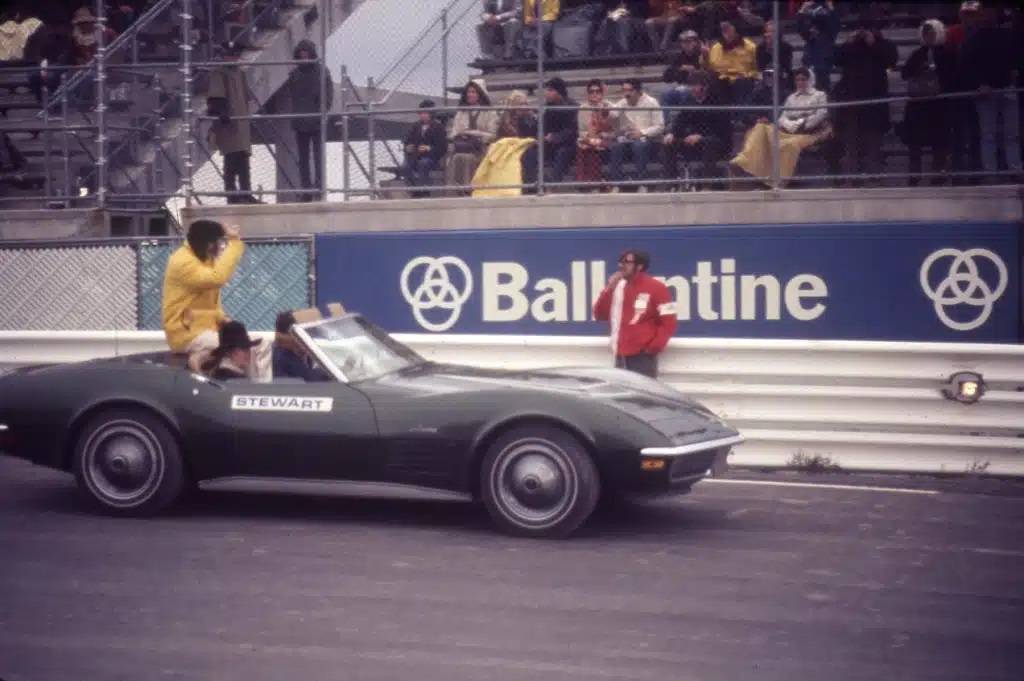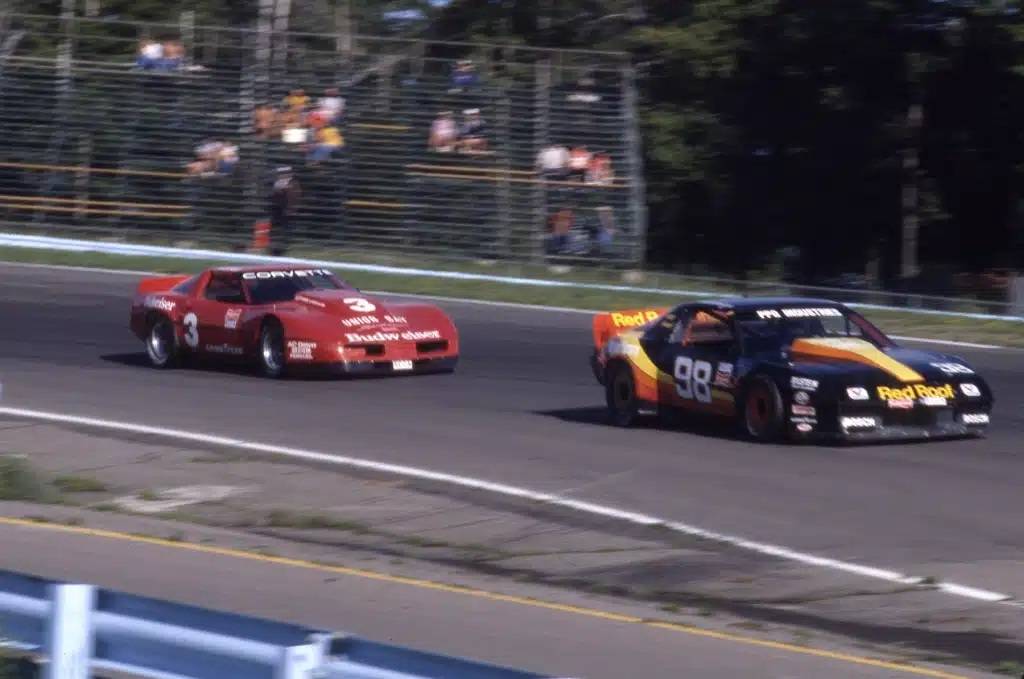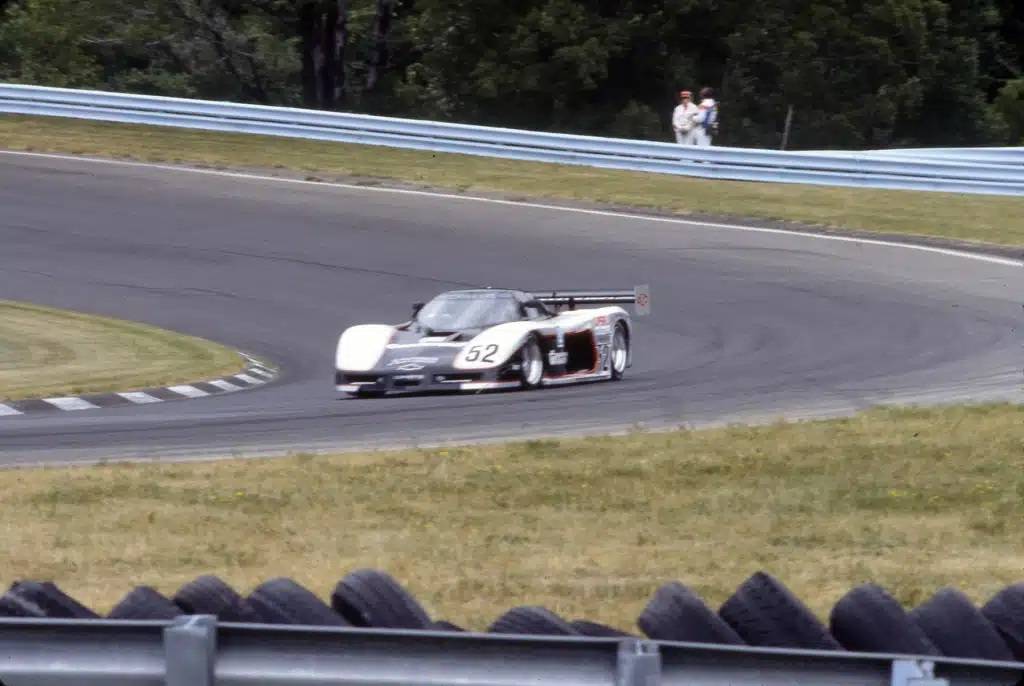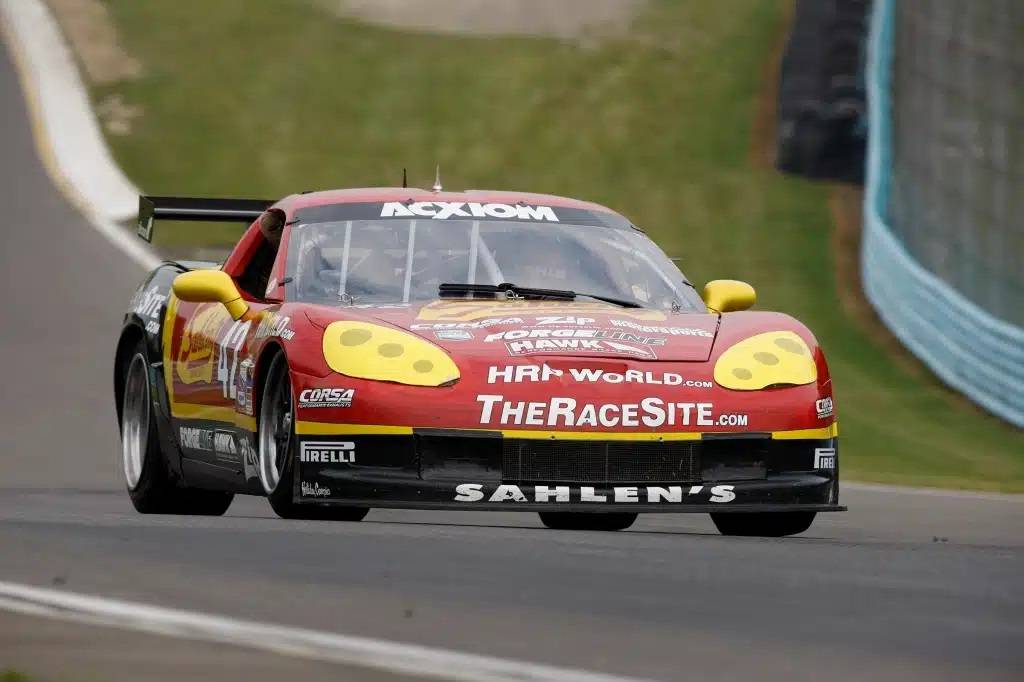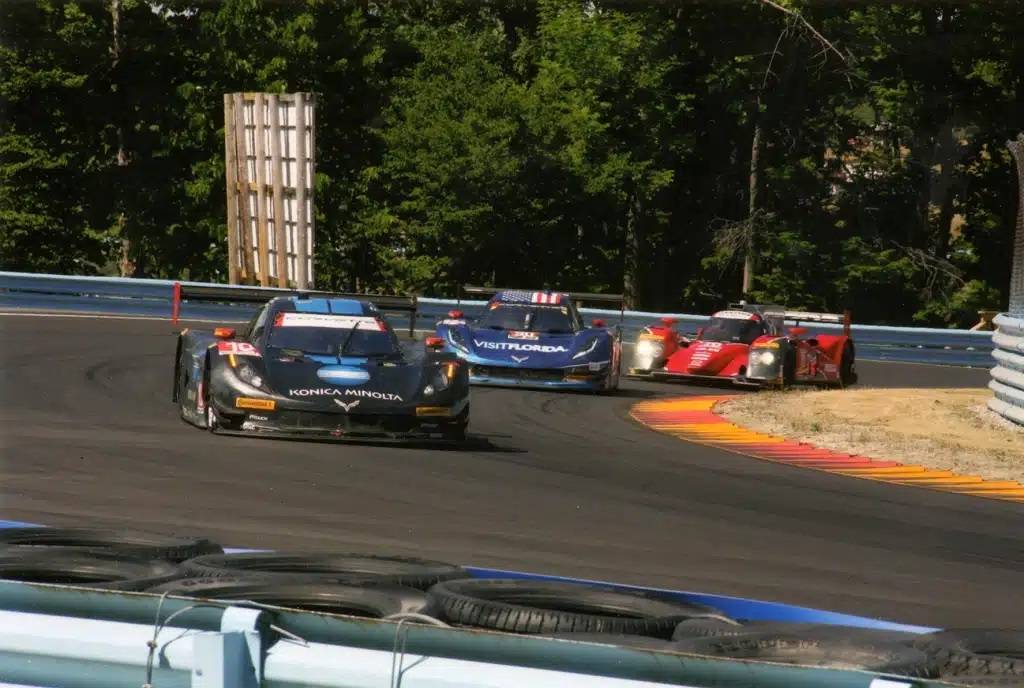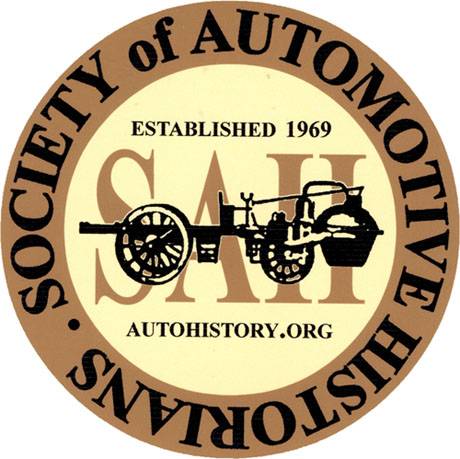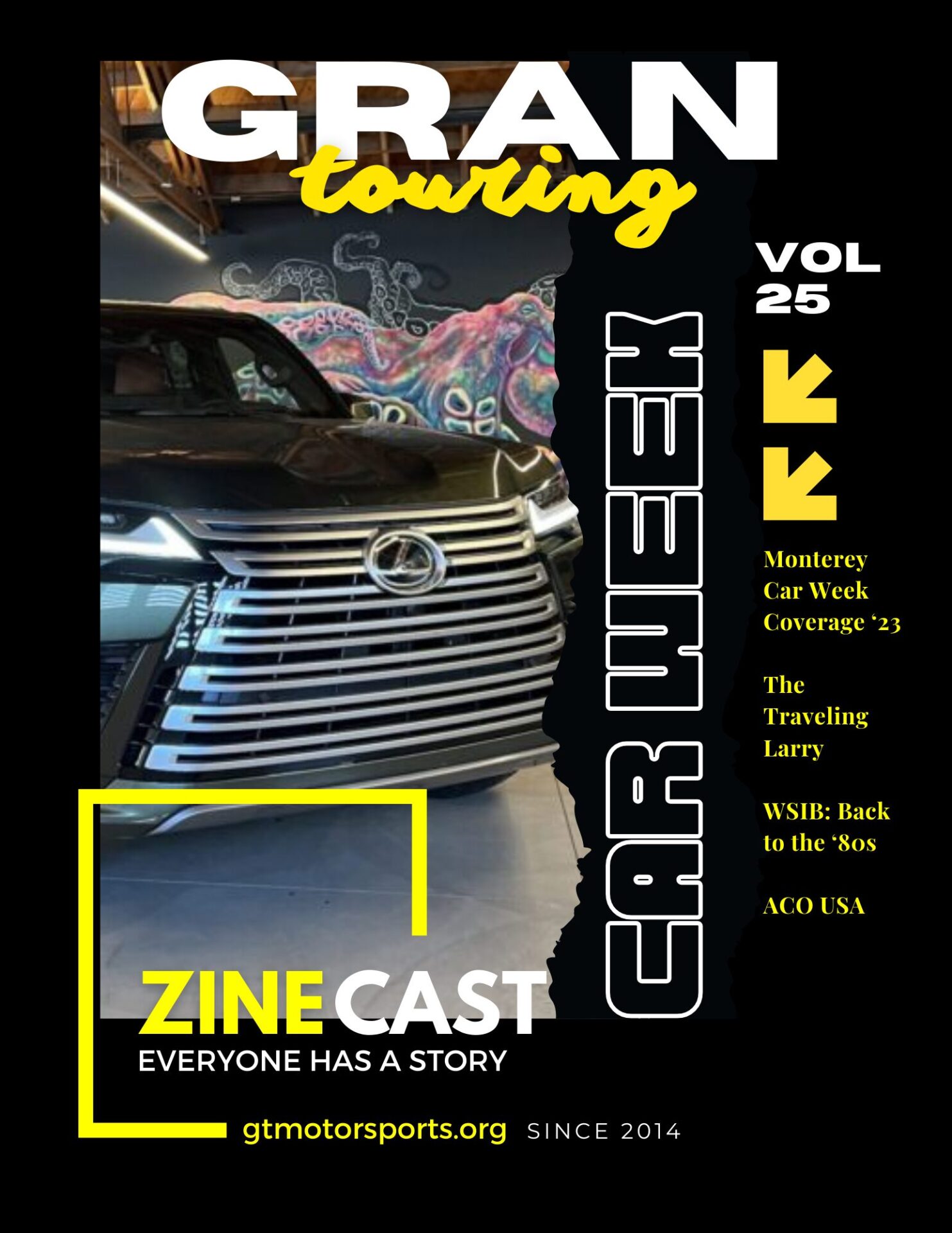Harley J. Earl and the Le Sabre concept car left a lasting impression on the village of Watkins Glen and inspired the creation of the iconic Corvette. Discover the little-known story of how one man’s visit to the Glen forever changed the American auto industry.
Tune in everywhere you stream, download or listen!
By Kip Zeiter, Coordinator of Visitor Services and Outreach, International Motor Racing Research Center – Photos courtesy of Richard Earl – Grandson of Harley Earl, Bill Green, and the International Motor Racing Research Center Archives
Harley J. Earl visits the Glen.
The history of racing in Watkins Glen is long and colorful. It’s a story of one man’s desire to race his MG on the streets and county roads surrounding the small upstate New York village and the obstacles he had to overcome to make that dream a “reality.” So, what happened on the streets here on October 2, 1948, forever changed the face of racing in the United States, and 75 years later, we are still eternally grateful to the drive and vision of Cameron Argetsinger.
BUT…there is another story- certainly not as well-known as that of racing – but one that forever changed a segment of the American automobile industry, AND it also happened in the small village of Watkins Glen.
The following are excerpts from a document titled “The Corvette Story,” written by Nick Fraboni, former owner of Glen Chevrolet and on file at the International Motor Racing Research Center.
In July 1951, Mr. Fraboni received a letter from Harley J. Earl, Chief Stylist of General Motors – an automotive “visionary” and the man who was the team leader of the largest industrial company in the world built through design and technology. Earl was planning to come to Watkins Glen for the sports car races, accompanied by a GM engineer and photographer, driving a radical new show car – the Le Sabre, where he needed a place to store it – and what better place than the Glen Chevrolet dealership?
The Le Sabre was one of the most influential concept cars of the 1950s, with aircraft–inspired design elements such as the wrap-around windshield and tail fins, which became common on cars designed during that decade.
It had a body made of aluminum, magnesium, and fiberglass and was powered by a supercharged 215 cubic inch aluminum block V8, able to run on gasoline or methanol. The car also featured GM’s first rear-mounted automatic transmission.
Other advanced features included a 12-volt electrical system instead of the usual 6-volt, heated seats, electric headlights concealed behind the center oval “jet intake,” a water sensor to activate the power top, and electric “lifting jacks” integrated into the chassis to aid in tire changes.
It was GM’s first use of the Le Sabre name, which Buick would later adopt. And like all of Earl’s cars, it was built to be road worthy and would become Earl’s “daily driver” for a period of 2 years after finishing its tour of the show car circuit.
The car – and the man were both hugely popular in the village that weekend. Mr. Fraboni states, “This was the first time I had met Harley Earl, and he impressed me very much. He had an outstanding personality – so easy to talk to – that he made you feel as though you had known him for a long time.”
Fraboni took Earl to the Town House Hotel “Grog Shop,” which was a haven for race enthusiasts. Earl’s stature and relaxed personality made him popular with everyone he met. Warren Clute Jr. and his wife also hosted them, and the night before the race went to the Argetsinger home, where he met more members of the racing community.
The day before the race, arrangements were made to have Earl lead the “Concours d’Elegance” parade in the Le Sabre from the Courthouse to Fourth Street. The parade consisted of foreign sports and racing cars, and Earl was greatly surprised at the crowd’s enthusiastic reaction. While driving in the parade, he commented that the American auto industry lacked a sports car similar to the European models.
On the day of the race, Fraboni and Earl watched the races from the porch of Nick’s friends, the Woodwards, just a short distance from the start/finish line. Once again, Earl was amazed at the great turnout of fans and the extent of their enthusiasm and remarked on more than one occasion that American car companies lacked these types of cars. As Nick writes in his piece – “although he never said at the time that it gave him the idea of styling one – his ‘wheels’ were turning!”
Pit Stop! A look back at the 1951 sports car races in Watkins Glen that inspired the ‘Vette.
Three races were run in 1951 – Seneca Cup, eight laps / Queen Catherine Cup, eight laps/ and Grand Prix, fifteen laps. Starting positions for each race were determined by drawing from a hat – there was no qualifying.
In the summer of 1953, when Nick learned that Chevrolet was building the Corvette, he contacted the Buffalo Zone Manager about having a car in Watkins Glen. He was told that only four had been built, and none had been allocated to a small Chevy dealership in a rural upstate NY village. While the Buffalo people were not helpful, they did authorize him to deal directly with the Chevrolet Promotions Office in Detroit.
Convinced that Harley Earl’s visit had inspired the idea for the car in 1951, Fraboni flew to Detroit, where the Promotions staff did not know much about Watkins Glen, let alone the story of Earl’s visit. With the same tenacity Cameron Argetsinger showed in 1948, Nick went directly to Earl’s office in the GM Building. Earl was out, but the Administrative Assistant who had been with Earl in 1951 remembered him and that memorable weekend. A call was made to Promotions indicating that Harley Earl’s office had approved releasing one of the four Corvettes to Glen Chevrolet Co. Inc.
The car arrived by van a few days before the 1953 race and, like the Le Sabre 2 years earlier, drew a great crowd to the dealership. Also, like the Le Sabre, it was at the head of the Concours d’Elegance parade a day before the race.
Should you think that this whole Watkins Glen / Corvette story is simply an “urban” or, more appropriately, “rural” legend, there is a recording of a radio interview that Earl did with Detroit journalist Stanley Brams in 1954 where Earl states: “I ran the Le Sabre up pacing a sports car race in Watkins Glen, and that’s where I got the idea for the Corvette” In his recent book, “Corvette 70 Years: The One and Only” author Richard Prince references that 1954 interview and that the inspiration for the car was born in Watkins Glen.
In 2023 we will celebrate 75 years of racing in Watkins Glen. The Corvette has played an integral part in much of that racing history. Beginning in the mid-‘50’s and continuing today with the IMSA Corvette Racing Team, Corvette has been a fixture at ‘The Glen.’
Relive “Corvette Racing” at WGI.
Both the history of racing at The Glen and the Corvette story will come to life during Watkins Glen Vintage Weekend, September 8-10, 2023.
On Friday, September 8 – The 30th Annual Watkins Glen Grand Prix Festival will occur. To learn more about the Watkins Glen Grand Prix Festival, visit their website at http://www.grandprixfestival.com/
The event is a day-long salute to and celebration of the early days of racing in the village. Upwards of 20,000+ enthusiasts make the annual pilgrimage to the Finger Lakes region of New York for this totally unique event.
There will be a special display of Corvette race cars from various eras, tying together 75 years of racing at The Glen and the part Corvette has played in much of that history.
As a very special addition to this year’s Festival, plans are being made to bring the Le Sabre back to Watkins Glen for the first time since Harley Earl’s memorable 1951 visit.
In addition to the Friday Festival, the Hilliard US Vintage Grand Prix will be held at the famed Watkins Glen International race circuit. For details and tickets, visit their website at https://www.theglen.com/
Sanctioned by the Sportscar Vintage Racing Association – SVRA – it’s one of the largest vintage racing events in the country, and the cars and stars of the Trans-Am Championship will have their own unique sound of “American Thunder” rumbling through the hills!
Come celebrate 75 years of racing history and 70 years of “America’s Sports Car.”
Vintage Weekend at The Glen – DON’T MISS IT!


